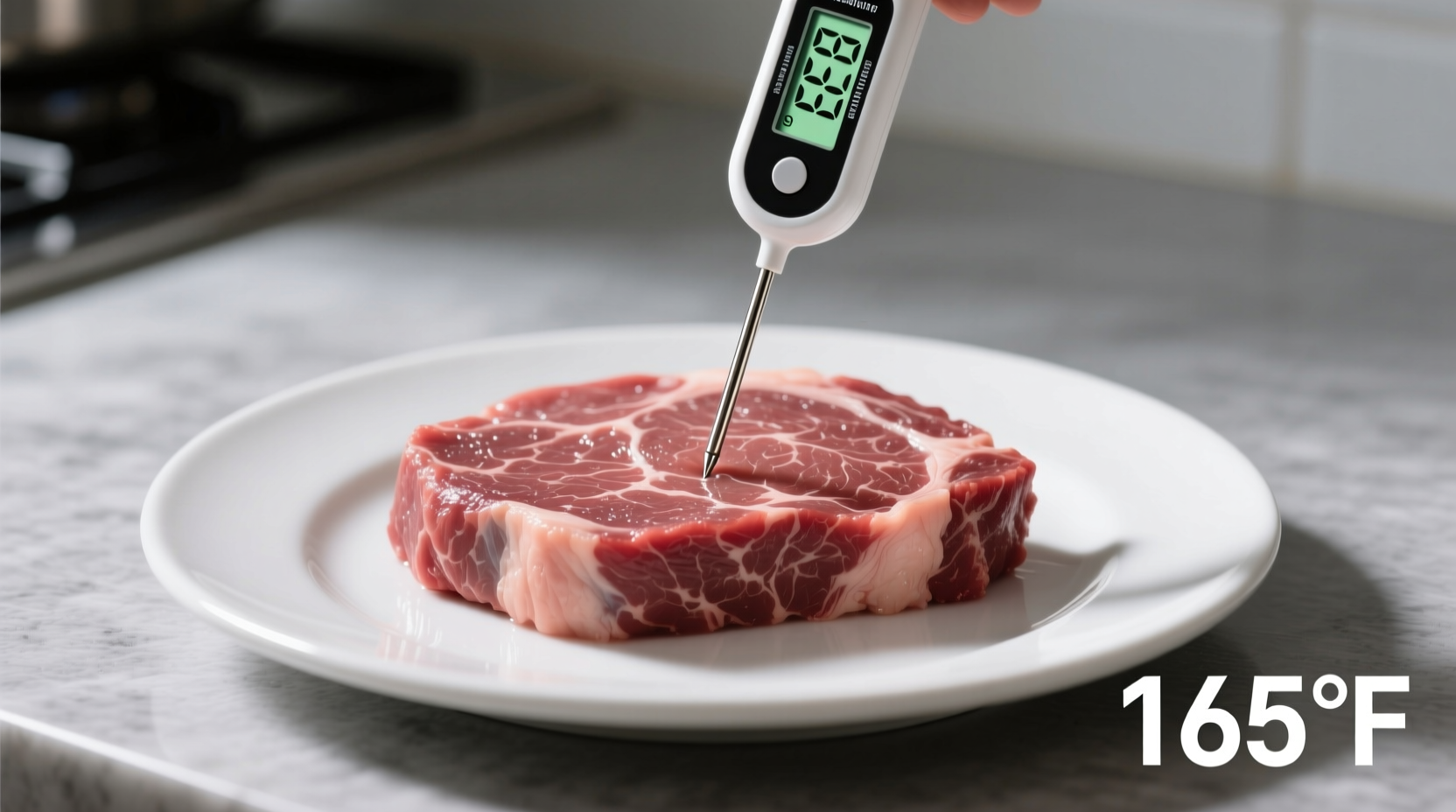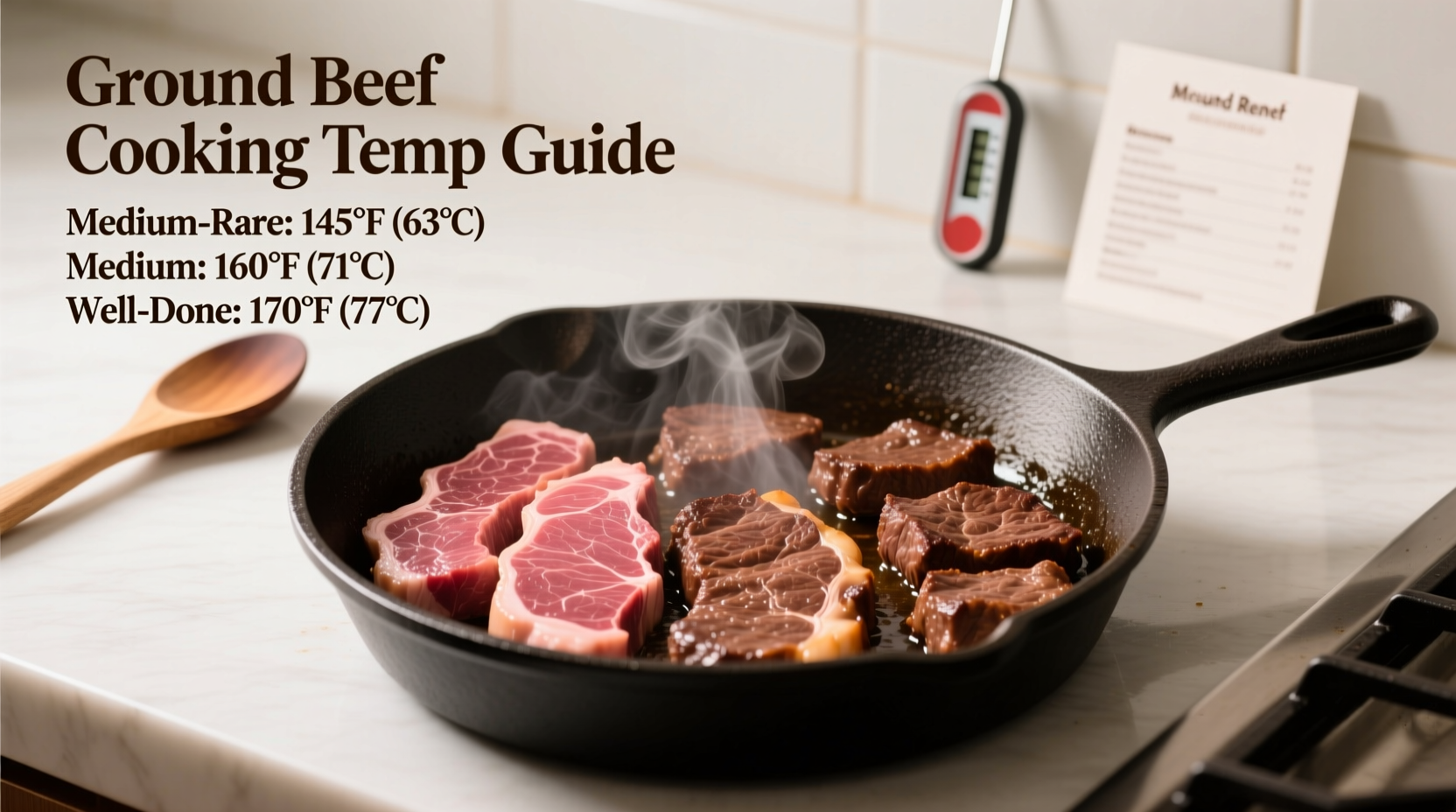When preparing burgers, meatloaf, or taco filling, getting the temperature right isn't just about preference—it's a critical food safety requirement. Unlike whole cuts of meat where surface cooking typically kills pathogens, ground beef distributes bacteria throughout the product during the grinding process. This makes accurate temperature monitoring essential for preventing foodborne illness.
Why 160°F Is the Safety Standard
The U.S. Department of Agriculture's Food Safety and Inspection Service (FSIS) established 160°F as the minimum safe temperature for ground beef based on extensive food safety research. At this temperature, dangerous pathogens like E. coli O157:H7, Salmonella, and Staphylococcus aureus are rapidly destroyed.
"Many home cooks rely on color to determine doneness, but this is dangerously unreliable," explains Antonio Rodriguez, culinary expert with professional kitchen experience. "Ground beef can appear brown at temperatures as low as 130°F—well below the safety threshold—while some properly cooked patties may retain a pink hue due to factors like added vegetables or low-acid marinades."

The Science Behind Safe Cooking Temperatures
When meat is ground, surface bacteria get distributed throughout the product. Whole muscle cuts only require surface cooking, but ground products need thorough heating. The 160°F standard provides a critical margin of safety:
- 140°F (60°C): Pathogens begin to die but require 12+ minutes to be eliminated
- 150°F (66°C): Requires 1+ minutes for pathogen elimination
- 160°F (71°C): Instant pathogen destruction—no holding time required
This temperature threshold comes from research conducted by the USDA Agricultural Research Service and is verified in the USDA's Cooking Meat Made Safe publication. The agency maintains this standard because home cooking environments lack the precision of laboratory conditions.
Proper Temperature Measurement Technique
Using a food thermometer correctly is as important as the temperature itself. Follow these professional guidelines:
- Choose the right thermometer: Digital instant-read thermometers provide the most accurate results for home use
- Calibrate regularly: Test in ice water (32°F/0°C) or boiling water (212°F/100°C at sea level)
- Insert properly: Place the probe into the thickest part of the meat, avoiding bone, fat, or gristle
- Check multiple spots: Especially important in irregularly shaped items like meatloaf
- Wait for stabilization: Keep the thermometer in place until the reading stops changing (typically 10-15 seconds)
Common Temperature Mistakes to Avoid
Even experienced cooks make these critical errors that compromise food safety:
- Guessing doneness by color: As little as 3% of ground beef remains pink at 160°F according to Colorado State University research
- Testing too early: Opening the grill or oven frequently causes temperature fluctuations
- Using inaccurate thermometers: Many inexpensive dial thermometers have 5-10°F margins of error
- Not cleaning between uses: Cross-contamination can transfer bacteria from raw to cooked meat
- Ignoring carryover cooking: Temperature can rise 5-10°F after removal from heat
Cooking Methods and Temperature Management
Different cooking techniques require specific temperature management approaches:
| Cooking Method | Recommended Approach | Special Considerations |
|---|---|---|
| Grilling | Medium-high heat (375-450°F) | Flip only once; check temperature 1-2 minutes before expected doneness |
| Sautéing | Medium heat (325-375°F) | Break meat into small pieces; stir frequently for even cooking |
| Baking | 350-375°F oven temperature | Cover with foil for meatloaf to prevent drying; check internal temperature |
| Sous vide | 130°F for 2+ hours then sear | Requires precise time/temperature control; must sear after cooking |
Food Safety Recommendations After Cooking
Reaching 160°F is just the first step in safe ground beef preparation. Follow these additional guidelines:
- Rest time: Let cooked ground beef rest for 3 minutes before serving to allow temperature equalization
- Leftover storage: Refrigerate within 2 hours (1 hour if ambient temperature exceeds 90°F)
- Reheating: Bring leftovers to 165°F before consuming
- Cross-contamination prevention: Use separate plates and utensils for raw and cooked meat
The Centers for Disease Control and Prevention (CDC) reports that undercooked ground beef is a leading cause of E. coli outbreaks in the United States. Following proper temperature guidelines reduces this risk significantly. Their ground beef handling recommendations consistently emphasize thermometer use as the only reliable safety measure.
Special Considerations for Different Ground Beef Products
While 160°F applies to traditional ground beef, other products have different requirements:
- Ground poultry: Requires 165°F due to higher salmonella risk
- Pre-cooked sausage products: Should reach 140°F as they're already cooked
- Commercially produced meat products: May contain preservatives allowing lower temperatures (follow package instructions)
Remember that food safety guidelines exist for a reason—approximately 265,000 Americans get sick from E. coli each year according to CDC estimates, with ground beef being a common transmission vehicle. Taking the extra 10 seconds to check your ground beef's temperature could prevent serious illness for you and your family.
Frequently Asked Questions
Can ground beef be safe at 155°F?
While 155°F will kill pathogens with a 15-second hold time, the USDA maintains 160°F as the standard for home cooking because most consumers don't accurately monitor hold times. For consistent safety without precise timing, 160°F remains the recommended minimum.
Why does my ground beef look done at lower temperatures?
Color change in ground beef occurs between 130-140°F due to myoglobin transformation, but this doesn't indicate pathogen destruction. Factors like pH, added ingredients, and cooking method affect color, making it an unreliable doneness indicator.
Do I need to cook store-bought ground beef to 160°F?
Yes. Regardless of where you purchase ground beef—supermarket, butcher, or farmers market—it requires cooking to 160°F. The grinding process distributes surface bacteria throughout the meat, creating the same food safety requirements regardless of source.
How long after reaching 160°F should I let ground beef rest?
The USDA recommends a minimum 3-minute rest period after cooking ground beef. This allows temperature to equalize throughout the product and gives any surviving pathogens additional exposure to lethal temperatures.
Can I rely on my oven or grill temperature settings?
No. Appliance temperature settings indicate the cooking environment, not the food's internal temperature. Only a properly inserted food thermometer can verify that ground beef has reached the necessary 160°F for safety.











 浙公网安备
33010002000092号
浙公网安备
33010002000092号 浙B2-20120091-4
浙B2-20120091-4